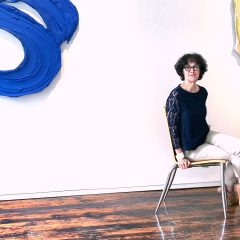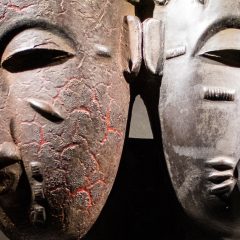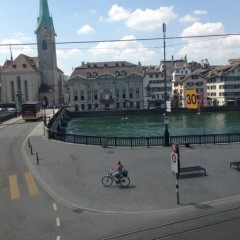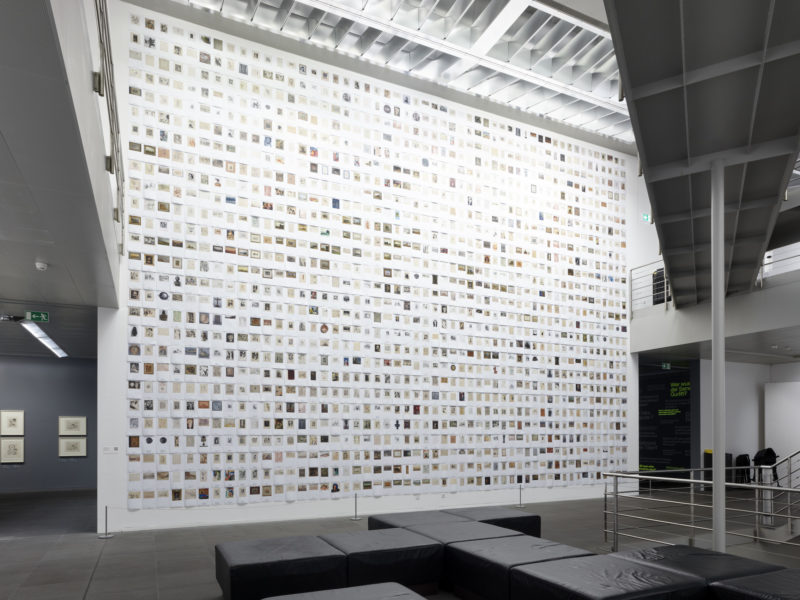
In a famous pair of essays published in 1976, Brian O’Doherty characterized the space in which contemporary art is exhibited as a white cube. The white cube is based upon the presumption that it is a space devoted solely to the aesthetic experience of art, excluding all political, economic and social issues related to works on view. Museums have tended to accept the same conceit for exhibiting collections well beyond contemporary art. Concern for the subject has been raised by artists involved in institutional critique since the 1960s, and discussions about work illegally excavated, exported or imported, art appropriated during war and colonial occupation, the incentive that collecting gives to looters, the social status accorded to individuals and corporations that results from arts patronage, and racial questions entangled in artworks’ histories have increased over the past decade, both in academic circles and the mainstream press. I was fascinated, during a short trip to Switzerland in September, to find a number of exhibitions that opened the white cube’s fourth wall and focused on the history of objects before they entered the collections and the ethical questions they raised. To my knowledge, there are no museums in the United States that have invited such public examinations.
The Gurlitt Collection at the Kunstmuseum Bern
The first example focussed on provenance – the history of ownership – which was controversial because many of the works involved passed through Nazi hands before entering the museum. This raised questions as to whether the donor’s father, who assembled the collection, had colluded in appropriating art from German museums and from private collectors, largely Jewish. “Taking Stock; Gurlitt in Review” was on view at the Art Museum, Bern from September, 2022- to January, 2023. “Taking Stock; Gurlitt in Review” was on view at the Art Museum, Bern. The museum presented its case directly in it’s introductory text:
“Taking stock means providing an account. In November 2014, Kunstmuseum Bern accepted the bequest from Cornelius Gurlitt (1932–2014) https://www.kunstmuseumbern.ch/en/research/the-gurlitt-estate/the-cornelius-gurlitt-legacy-2512.html . This means that Kunstmuseum Bern is now responsible for an art collection that is historically fraught. The existence of the around 1,600 works of art had become public knowledge in 2013. The works originate from the estate of Cornelius Gurlitt’s father, art historian and art dealer Hildebrand Gurlitt (1895–1956). It was known that Gurlitt had dealt in art during the period of Nazi government in Germany (1933–1945) and also on behalf of the regime. Suspicions concerning the presence of works of art that may have been looted by the Nazis prompted several years of research, …”
The Kunstmuseum has spent eight years conducting research on the Gurlitt bequest and returned eleven works to their rightful owners. All of the research is available online. The exhibition demonstrated the various ways that an artwork’s provenance can be determined, with examples from the collection. They involved archival research and physical examination of the artworks, including mounting methods for works on paper, labels on the reverses that indicate sale or exhibition, and evidence of conservation treatment that matched that of other works. The exhibition addressed art with marks that had been deliberately manipulated, works appropriated from German museum collections by the Nazi government (which the most recent international agreements do not consider loot, since they were taken by the lawful government), and numerous case studies of artworks that had been in private collections. A two-story high wall just outside the exhibition galleries was papered with images from the research files for each work in the collection, which made an impressive visual record of the amount of effort involved.
A collection based on wealth from supplying arms to the Nazis
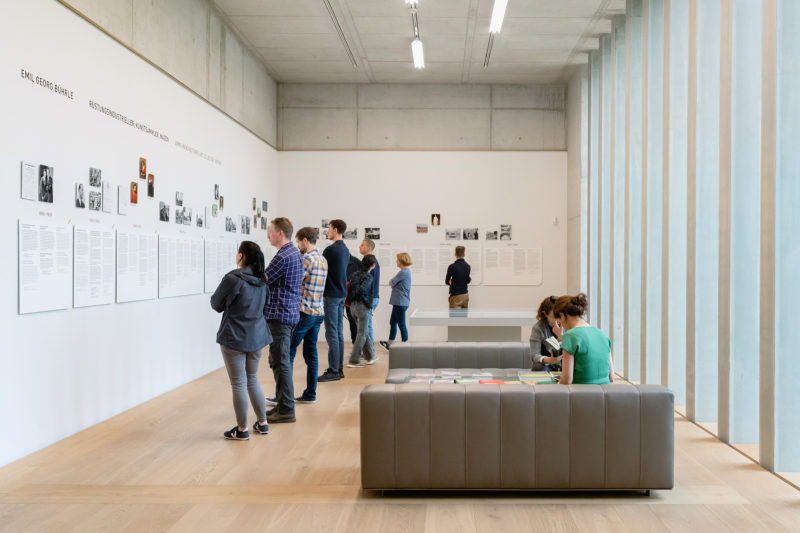
Entrance to the Bührle Collection at the Kunsthaus Zürich is through a large and light-filled documentation room. Two walls display a timeline of the collector’s life, including his businesses, social connections, collecting activities and association with the museum. Large letters bear the caption “Emil Georg Bührle; Arms Manufacturer, Art Collector, Patron.” Two couches flank a table which holds numerous publications about the collection and its background, including several government-commissioned reports, as well as publications highly critical of the Swiss state and the museum, including Thomas Baumberger, “Looted Art – Art Robbery. Switzerland and the trade in stolen cultural assets during the Second World War” (1998) and Erich Keller, “The Contaminated Museum.The Kunsthaus Zürich and the Bührle”Collection” (2021), both only in German.
The Bührle Collection is the core of Kunsthaus Zürich’s Impressionist, Post-Impressionist and early modern art collection. The 170 works formally entered the museum on long-term loan in 2021, approved by popular vote of the City of Zürich, which paid for the most recent expansion. Bührle was the wealthiest man in Switzerland and had a long relationship with the museum. He was a member of its collection committee and board, and purchased significant artworks for the museum. He also made a large gift to finance a new wing which opened in 1958, two years after his death. As the museum notes on its website, “The Kunsthaus has been inextricably bound up with the collecting activities, patronage and personal ambitions of Emil Bührle since 1940.”
The museum’s extensive website (https://buehrle.kunsthaus.ch/en/), which includes all of the information cited here and is updated as it continues to respond to criticisms, also mentions that Bührle has been the subject of repeated public controversy since 1970. It is well-known that his fortune came from the manufacture of armaments which he sold to the Nazis, trade which was legal in Switzerland until 1944. He founded another company in Berlin and was forced to transfer his share to the Nazi government, but he retained a license that was lucrative throughout WWII. It is not known whether he knew that the factory used forced labor from a concentration camp. Questions about his political affiliations go back to his activities with a militia in Berlin following WWI.
Controversy has continued around the extent of Bührle’s cooperation with the Nazi government and whether he had, knowingly or not, acquired artwork looted from Jewish collectors. In 1958, a Chamber on Looted Assets of the Swiss Federal Supreme Court investigated works that had entered Swiss collections, and Bührle returned 13 works identified as loot. In 2017, the city and canton of Zürich sponsored another inquiry into the subject, and there has been criticism that the final report, which can be found via a link on the website, glossed over problematic questions of the collector’s political past.
The controversy has extended to the Kunsthaus itself, and the fact that Bührle gained entry to Zurich social circles only after becoming known as an art collector, and was asked to join its board by members who shared his political sympathies. Further criticism addresses whether exhibiting the works is a betrayal by the Kunsthaus of war victims whose collections were stolen or sold under forced conditions. All of the criticisms and the history that prompted them are acknowledged on the museum’s website and in the documentation room adjacent to the collection. The museum is in the process of adding information about prior owners of works in the collection, and is working with their representatives on new labels that acknowledge them. Whatever social standing Bührle may have gained from his art collecting and patronage is situated in the shadow of his biography, and the museum acknowledges that institutions supported by private philanthropy take on the risk of criticism of the sources of their gifts.


